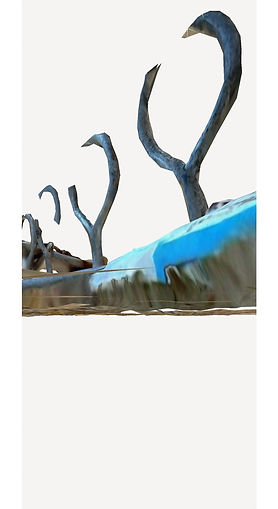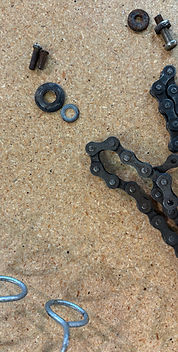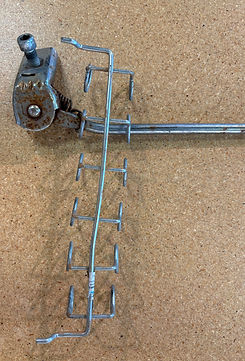DIGITAL EXPERIMENTS









Landscapes of Rust, 2024, Photographs of digital Polycam scans




Original tools used for scans



Initial Digital Drawings, Adobe Illustrator


Topography of Light (night and day), 2024, Laser cut plexiglass
My project combines the conceptual underpinnings of American land art with contemporary technological art-making practices to investigate how technology filters our observations of natural phenomena.
Just as land art represents the landscape through the human lens, my work represents light through both the human and technological lenses. My work takes the element of light - an ephemeral, vast, difficult-to-grasp phenomena and solidifies it through technological means.
In the digital age, we habitually memorialize everything in our path with ease. We take photos of everything. This allows us to feel at ease in forgetting. We know that we can always pull out our devices to remember. My work asks its viewer to consider the appropriate balance between memory and forgetfulness.
By re-experiencing a familiar landscape through the lens of an earthwork, we are able to see that same land in the future - with or without the earthwork’s aid - in revelatory ways. The growth of art from land allows for humans to look at the land with a more empathetic gaze. Through the art we may better understand the earth - and ourselves. Land art often serves as a ritual space - to worship of both nature and art - for the contemporary audience and sometimes even aides in the movement to conserve both nature and artistic practice.
My work takes this concept a step further to not only investigate nature through the human lens, but also through the stratification of technological tools or lenses. The layers of technology I am using, those being first photography of light, then digitization of my drawings, then laser cutting, elicits this stratification. The natural light is seen through three layers of interpretation - my own, that of Adobe Illustrator and that of the laser cutter. The ways in which technology affects natural phenomena is also deeply present in our ever-evolving notion of ‘natural beauty’. In this context, I am defining natural beauty as that which eliminates any distinction between the beautiful and the sublime. Natural beauty is not isolated from negativity. It is like the mother-of-pearl: awesome, baroque and rippling with its imperfect texture. By using technology to represent nature, I am challenging the notion that digital and natural beauty should always be defined in opposition to each other.


